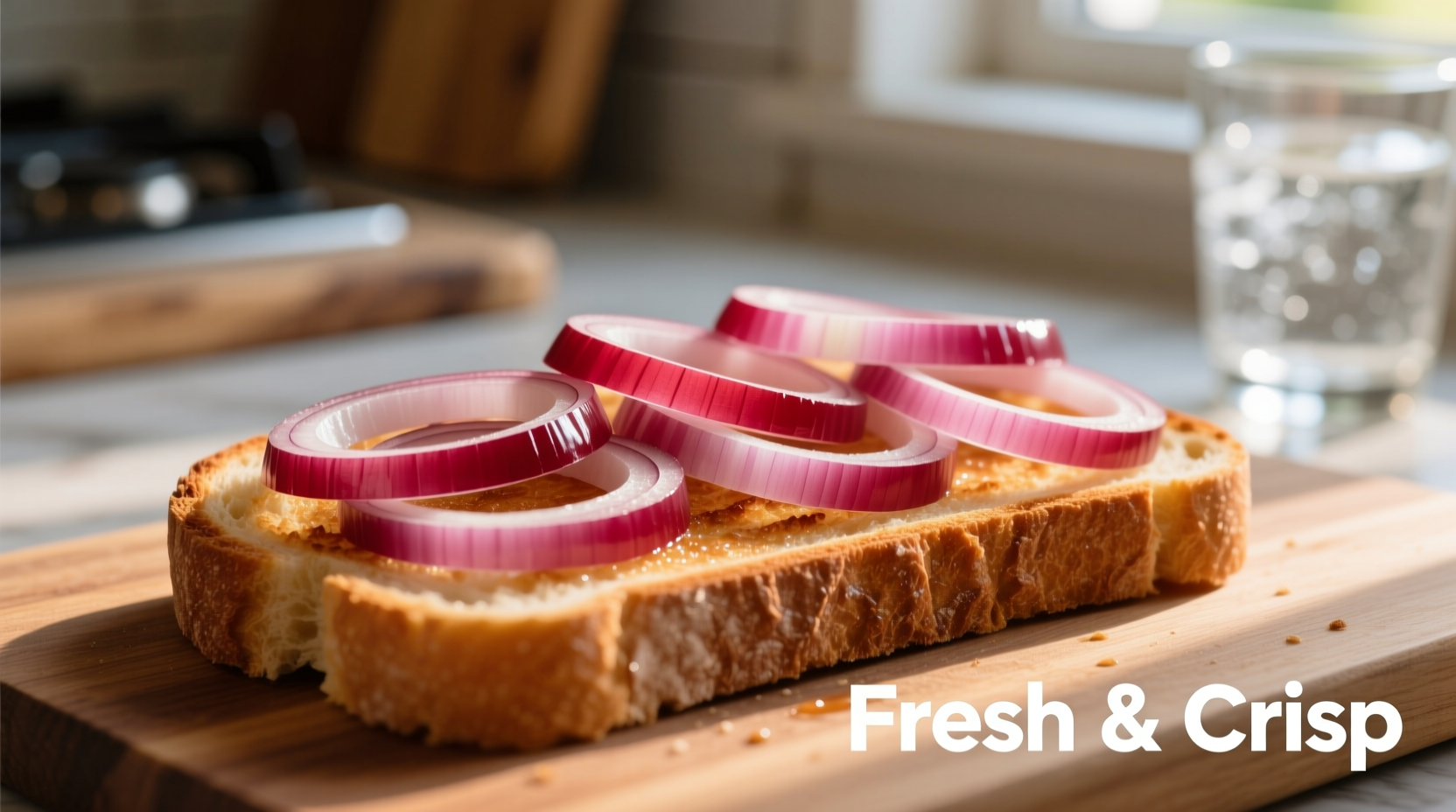Choosing the right onion can make or break your sandwich experience. While many home cooks reach for whatever's in the pantry, understanding onion varieties transforms ordinary lunches into culinary delights. As a professional chef who's crafted thousands of sandwiches across diverse culinary settings, I've discovered that the ideal onion depends on your specific sandwich type and personal taste preferences.
| Onion Variety | Flavor Profile | Best Sandwich Types | Preparation Tip |
|---|---|---|---|
| Red Onion | Medium sharpness, slight sweetness | Cold cuts, burgers, veggie sandwiches | Soak in ice water for 10 minutes to mellow sharpness |
| Vidalia Sweet Onion | Mild, noticeably sweet | Turkey, ham, grilled cheese | Use raw in thin slices for maximum sweetness |
| White Onion | Sharp, pungent | Mexican-inspired, pulled pork | Quick pickle for 15 minutes to reduce intensity |
| Shallot | Delicate, subtle garlic notes | Chicken salad, tuna salad, gourmet sandwiches | Finely mince for even distribution |
Why Red Onions Reign Supreme
Among all onion varieties, red onions consistently deliver the most versatile performance for sandwiches. Their distinctive purple rings add visual appeal while their balanced flavor profile complements rather than dominates other ingredients. According to research from the National Onion Association, red onions contain approximately 4-5% sugar content compared to 3-4% in yellow onions, creating that perfect sweet-sharp equilibrium ideal for sandwiches.
Professional chefs favor red onions for deli sandwiches because they maintain their structure when sliced thin, providing textural contrast without becoming soggy. When preparing red onions for sandwiches, I recommend the ice water soak technique mentioned in the table. This simple step reduces the sulfur compounds responsible for harshness while preserving the crisp texture that makes sandwiches satisfying to eat.

Sweet Onions: When Mildness Matters
Sweet onion varieties like Vidalia, Walla Walla, and Texas Sweet offer an excellent alternative when you want onion flavor without the bite. These regional specialties develop their characteristic sweetness due to low sulfur content in their growing soils. The Georgia Department of Agriculture confirms that Vidalia onions must contain less than 0.15% sulfur to earn their protected designation.
Sweet onions shine in sandwiches where delicate flavors could be overwhelmed. They're particularly effective in turkey clubs, ham sandwiches, and grilled cheese where their natural sugars caramelize beautifully when heated. For cold sandwiches, use sweet onions raw in thin slices to maximize their flavor contribution without causing tears or overpowering other ingredients.
Specialty Onions for Gourmet Touches
Shallots and scallions provide sophisticated options for elevated sandwiches. Shallots, with their subtle garlic undertones, blend seamlessly into chicken or tuna salads without creating onion chunks that dominate each bite. Scallions (green onions) work well in Asian-inspired sandwiches and wraps, adding mild onion flavor with vibrant green color.
When using specialty onions, remember that their delicate flavors can be lost if over-prepared. For shallots in chicken salad, I recommend using a mandoline slicer for paper-thin slices rather than chopping, which releases too much pungent oil. With scallions, use both white and green parts but slice them on a sharp diagonal for maximum surface area and visual appeal.
Context Matters: Matching Onions to Sandwich Types
The "best" onion depends entirely on your sandwich composition. Consider these pairings:
- Meat-heavy sandwiches (pastrami, roast beef): Red onions provide necessary contrast to rich meats
- Poultry sandwiches (turkey, chicken): Sweet onions complement without competing
- Veggie sandwiches: Red onions add necessary sharpness to balance earthy vegetables
- Grilled sandwiches: White onions develop complex flavors when caramelized
- Seafood sandwiches: Shallots offer subtle flavor that won't overpower delicate fish
Avoid These Common Onion Mistakes
Even with the best onion choice, improper preparation can ruin your sandwich. Avoid these pitfalls:
- Using thick slices that create uneven flavor distribution
- Adding raw onions to hot sandwiches without allowing cooling time
- Overloading sandwiches with onions, creating structural instability
- Using old onions that have become overly pungent or soft
- Not considering how onions interact with other strong flavors like mustard or pickles
For optimal results, slice onions no thicker than 1/8 inch and distribute them evenly across the bread surface. When building your sandwich, place onions between meat and condiments to prevent direct contact with bread, which reduces sogginess.
Practical Tips for Perfect Onion Integration
Professional sandwich makers use these techniques to maximize onion benefits:
- Temperature control: Chill onions for 30 minutes before slicing for cleaner cuts
- Layering strategy: Place onions between wet ingredients (tomato) and dry ingredients (meat) to prevent sogginess
- Flavor balancing: Pair sharp onions with acidic elements like vinegar-based dressings
- Texture preservation: Add onions just before serving to maintain crispness











 浙公网安备
33010002000092号
浙公网安备
33010002000092号 浙B2-20120091-4
浙B2-20120091-4